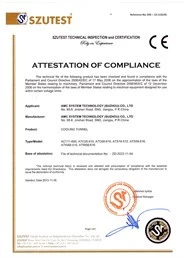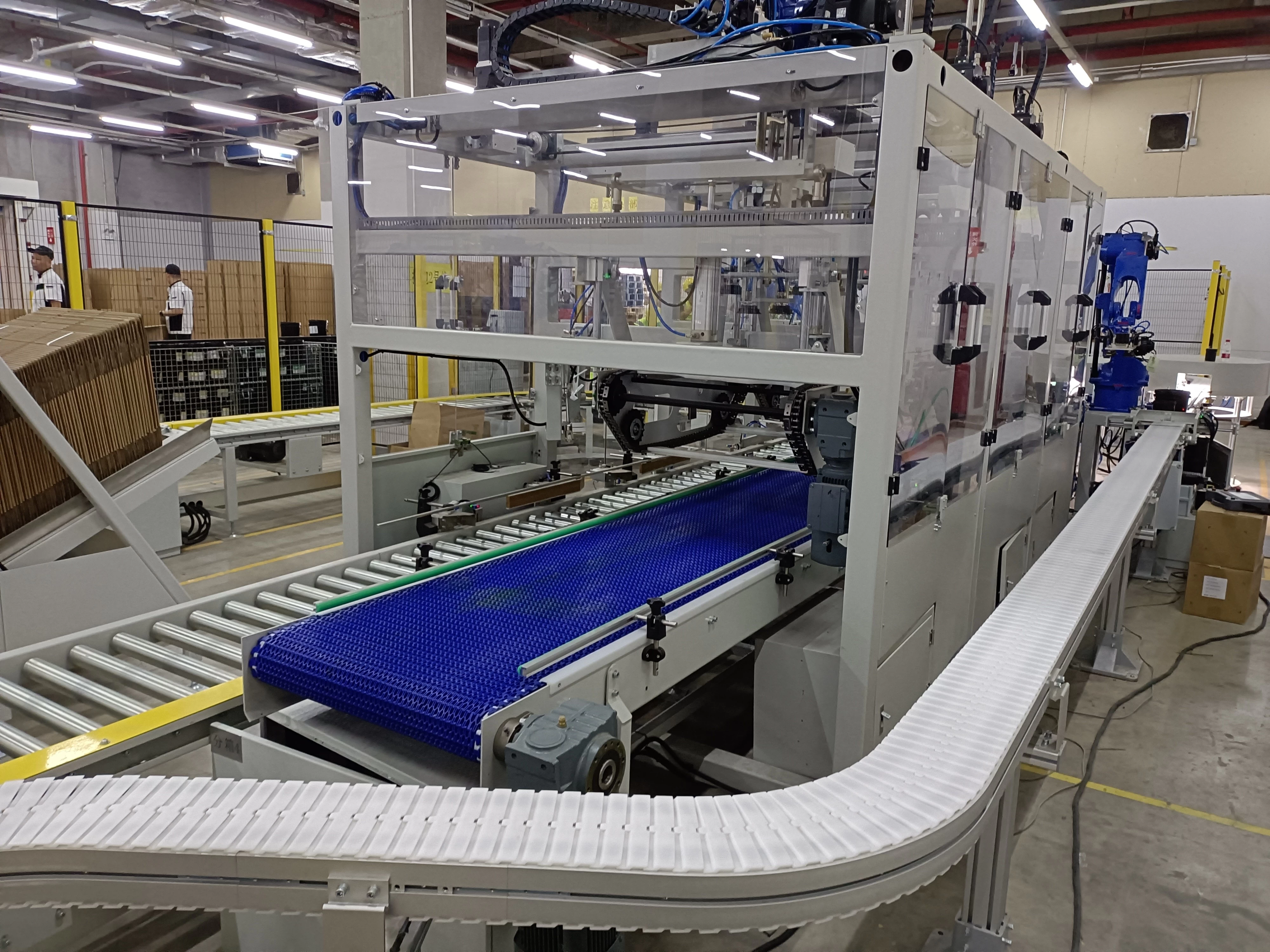China-made mesh belt conveyor Introduction
AMC
AMC
2016-06-30 09:21:25
Chain network users are aware of stainless steel mesh chain maintenance is very important, this is done not only to extend the life of the network chain, companies can also reduce the economic cost and increase productivity.
Usually stainless steel mesh chain operation after eight weeks, since the nitride and carbide cause the tape began to break down. Traditional 314 stainless steel mesh chain, for example, for the first general often quenched preheating, that is at 870 ℃ in the air flow to the normal operating condition is switched to N2-3% H2 28 hours, then hold temperature for 2 hours followed within 14 hours gradually warming up to 1120 ℃ and holding temperature for 8 hours and then began sintered parts. At this time the atmosphere containing oxygen of about 3ppm, the dew point of about -55 ℃. (Ie, containing water vapor of about 20ppm). But about 8 weeks after the tape begins to break. This is due to a thin layer of chromium oxide in the preheat zone of the stainless steel surface is oxidized state, after entering the high-temperature region becomes reductive, so the surface oxide is reduced, but after entering the cooling zone, though, like the atmosphere, but the temperature is lowered, changed back to oxidation, so that the net again with oxidation, this oxidation reduction cycle will result in material damage.
In addition, the stainless steel in high temperature region because the part of the graphite and lubricants can decompose to produce CO, resulting in carburizing, CO with this stainless steel mesh in the reaction of chromium carbide Cr, and an atmosphere of nitrogen into nitrogen will react with the chromium chromium, compounds of these two compounds are hard and brittle, making stainless steel mesh belt shortened life expectancy.
Solutions are as follows: If the dew point of the atmosphere increased to 34 ℃, namely water vapor is 260ppm, the stainless steel mesh belt can still be maintained at a high temperature zone of mild oxidation, the oxide surface is not reduced. Further surface and no phenomenon of decarburization occurs.
In addition to the adjustment of the water vapor in the atmosphere may be added to carbon dioxide, the carbon dioxide reacts with hydrogen to water, carbon dioxide and water are the oxidizing atmosphere, the content thereof is adjusted with a stainless steel mesh can be maintained at the oxidation state of the light, but the work is still in a reducing atmosphere, it is still the reduction of iron oxide surface to improve bond strength between the powder to enhance mechanical properties of the workpiece.
Also prior to the use of quenched and tempered condition also affects network chain, if the aforementioned quenching conditions were changed at 760 ℃ (formerly 870 ℃) temperature and held under flowing air for 28 hours, then switch to gas containing 260ppm water the N2-3% H2, holding temperature for 2 hours then warmed to 14 hours to 1120 ℃, holding temperature for 8 hours after the start of production.
Here reason when dropped 870 ℃ 760 ℃, nitrogen can be avoided in the reaction of chromium and stainless steel in the air, and the temperature was raised to 1120 ℃ because there is water vapor in the atmosphere, in Mr. belt surface into chromium oxide, chromium is avoided the reaction with the nitrogen. In this case belt life than the previous best state can be extended for a further one-third of the time, that is no conditioning, no adjustment of 2.7 times the life of the atmosphere under the condition. This is due to the content of chromium nitride fewer large grains of creep properties beneficial reason.
Usually stainless steel mesh chain operation after eight weeks, since the nitride and carbide cause the tape began to break down. Traditional 314 stainless steel mesh chain, for example, for the first general often quenched preheating, that is at 870 ℃ in the air flow to the normal operating condition is switched to N2-3% H2 28 hours, then hold temperature for 2 hours followed within 14 hours gradually warming up to 1120 ℃ and holding temperature for 8 hours and then began sintered parts. At this time the atmosphere containing oxygen of about 3ppm, the dew point of about -55 ℃. (Ie, containing water vapor of about 20ppm). But about 8 weeks after the tape begins to break. This is due to a thin layer of chromium oxide in the preheat zone of the stainless steel surface is oxidized state, after entering the high-temperature region becomes reductive, so the surface oxide is reduced, but after entering the cooling zone, though, like the atmosphere, but the temperature is lowered, changed back to oxidation, so that the net again with oxidation, this oxidation reduction cycle will result in material damage.
In addition, the stainless steel in high temperature region because the part of the graphite and lubricants can decompose to produce CO, resulting in carburizing, CO with this stainless steel mesh in the reaction of chromium carbide Cr, and an atmosphere of nitrogen into nitrogen will react with the chromium chromium, compounds of these two compounds are hard and brittle, making stainless steel mesh belt shortened life expectancy.
Solutions are as follows: If the dew point of the atmosphere increased to 34 ℃, namely water vapor is 260ppm, the stainless steel mesh belt can still be maintained at a high temperature zone of mild oxidation, the oxide surface is not reduced. Further surface and no phenomenon of decarburization occurs.
In addition to the adjustment of the water vapor in the atmosphere may be added to carbon dioxide, the carbon dioxide reacts with hydrogen to water, carbon dioxide and water are the oxidizing atmosphere, the content thereof is adjusted with a stainless steel mesh can be maintained at the oxidation state of the light, but the work is still in a reducing atmosphere, it is still the reduction of iron oxide surface to improve bond strength between the powder to enhance mechanical properties of the workpiece.
Also prior to the use of quenched and tempered condition also affects network chain, if the aforementioned quenching conditions were changed at 760 ℃ (formerly 870 ℃) temperature and held under flowing air for 28 hours, then switch to gas containing 260ppm water the N2-3% H2, holding temperature for 2 hours then warmed to 14 hours to 1120 ℃, holding temperature for 8 hours after the start of production.
Here reason when dropped 870 ℃ 760 ℃, nitrogen can be avoided in the reaction of chromium and stainless steel in the air, and the temperature was raised to 1120 ℃ because there is water vapor in the atmosphere, in Mr. belt surface into chromium oxide, chromium is avoided the reaction with the nitrogen. In this case belt life than the previous best state can be extended for a further one-third of the time, that is no conditioning, no adjustment of 2.7 times the life of the atmosphere under the condition. This is due to the content of chromium nitride fewer large grains of creep properties beneficial reason.
















